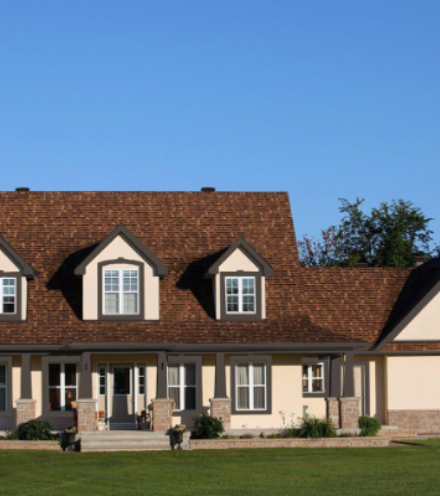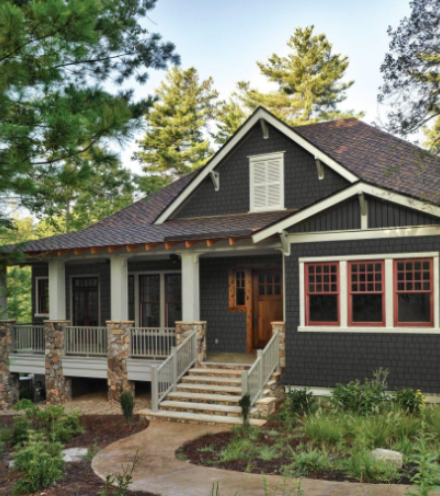
The material you choose to cover the exterior of your home does more than simply affect the way that it looks; it also helps to protect your home from the elements where you live. Siding is arguably one of the most important pieces of any home, which is why you need to take such care when selecting it.
There are many different materials on the market today to use on your home. Most homeowners agree that they want a material that is long-lasting, low maintenance, durable, and attractive as well. Two materials that fit these criteria for many homeowners include fiber cement and stucco. Both have positive attributes that can make them attractive to homeowners, but only fiber cement truly delivers on what homeowners need the most.
Durability
Siding is your home’s first line of defense against the elements and the climate your home is located in. For that reason, it needs to be durable enough to withstand whatever Mother Nature can throw at it.
Stucco that is properly cared for and used in the right climate can easily last 50 or more years, which is one of the reasons for its popularity. In some climates, however, including humid areas and places that see heavy rainfall, the longevity of the stucco can be dramatically reduced.
Moisture from humidity and rain can soften the stucco. Stucco is also restricted in its ability to move and breath, which can cause issues such as cracks to appear in its surface. Once these cracks appear, more moisture can make its way inside, causing even more damage.
Fiber cement siding performs well with moisture. Fiber cement technology produces an extremely durable, weather-resistant siding. It holds up well to impact, and doesn’t rot or crack the way that other materials such as stucco will. For this reason, fiber cement siding is one of the longest-lasting siding materials available today.
Maintenance
In addition to the cracks that can sometimes occur in the surface of stucco, the paint that covers its surface can also blister, crack, and peel. Stucco, therefore, needs to be frequently repainted in order to keep it looking its best, particularly when it’s used in a wet or humid climate.
In addition, when stucco requires repair, this can be a time consuming and difficult process. Matching the type of stucco that’s already on your home can make things like repairs obvious, as well as expensive. Patching that is done incorrectly can also lead to future issues, including new cracks forming at the patch’s edge.
Fiber cement siding is much lower maintenance. The color is less likely to peel, chip or crack, so you don’t need to worry about repainting it on a regular basis. And because the material doesn’t crack or chip as easily and is impervious to moisture and insect activity, it requires fewer repairs overall, which makes it easier to maintain.
Installation
Stucco is a specialized material to install, which can mean that it’s both more difficult to find a qualified installer, as well as more expensive. Having stucco applied properly is crucial to its longevity, which means finding the right installer becomes even more important.
Fiber cement siding is comparatively easy to install. There are many more qualified installers, with many contractors choosing fiber cement as their product of choice for home exteriors.
Looks and Style
Stucco’s popularity is limited to certain regions of the country where the climate is more favorable to this type of exterior covering. It’s also extremely limited in the types of styles and appearances that it can bring to your home’s exterior. While the texture that stucco produces can be considered a plus to some Mediterranean and Southwestern style homes, it can also be considered a drawback if used on more contemporary structures, as well as most traditional style homes.
Fiber cement siding is a much more versatile type of material. It can be produced in several different styles, including shingles, traditional lap siding, board-and-batten style siding, and architectural panels that can be smooth or textured. For this reason, you can use fiber cement on nearly any type of home or building, regardless of what it’s architectural style. You can also combine different types of fiber cement siding on one exterior, such as lap siding with shingles, to get a unique or custom appearance for your home. This is in contrast with the single type of appearance that stucco can bring; fiber cement siding simply gives you more options for creating the type of curb appeal you want for your home.
Make the Right Choice for Your Home
While there are many different options for siding your home’s exterior, only fiber cement siding can give you the durability and low maintenance good looks that you want for your home. While stucco is longer lasting and less maintenance than wood siding, it still doesn’t perform as well as or match the versatility and appearance of fiber cement siding.
Make the right choice for your home, and choose fiber cement siding when it’s time to clad your home’s façade.




